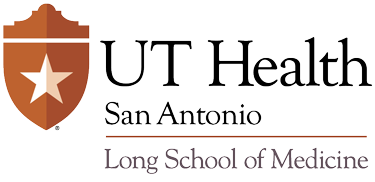Curriculum
The Diagnostic Radiology Residency Program is fully accredited by the Accreditation Council for Graduate Medical Education (ACGME). There are approximately 11 resident positions per year for the four-year training program. Intern year training must be completed prior to the start of the Diagnostic Radiology Residency.
The primary clinical teaching program is based at University Hospital, where residents receive the majority of their training. Residents also rotate at Medical Arts and Research Center (faculty-practice UT Health clinics), Cancer Therapy & Research Center, and the Robert B. Green outpatient center. Most of the rotation schedules are structured on a four-week basis. The Residency rotation curriculum is structured to provide each resident a solid foundation in all of the subspecialties prior to the CORE examination at the end of the third year.
Fellowships are available following residency training in all clinical and research specialties including Abdominal Imaging, Breast Imaging, Musculoskeletal Radiology, MRI, ER, and Chest/Cardiac Radiology. Fellowships in Angiography/Interventional Radiology, Neuroradiology, and Nuclear Medicine are approved by ACGME, and finishing fellows are eligible for the CAQ subspecialties examinations given by the American Board of Radiology. Fellowship Opportunities
The training is centered on a broad exposure to radiology and a progressive increase in sub-specialty complexity and responsibilities throughout residency. This culminates with the Core Exam at the end of the 3rd year and selection of sub-specialty mini-fellowships in the 4th year.
- The first clinical year is devoted to a broad exposure of the core sub-specialties including: abdominal, thoracic, neuroimaging, and musculoskeletal in anticipation of taking evening buddy call in the 2nd half of first year.
- The second year introduces overnight call responsibility with day rotations focused on improving core competencies. Some second years will get exposure to more advanced rotations such as Cardiac Imaging or Body MRI.
- The third year is focused on completing exposure to subjects covered on the ABR Core exam and providing lighter rotations in the second half to study for the Core Exam.
- The final year is devoted to rounding out the resident’s clinical skills in anticipation of fellowship and future practice. Residents have the ability to request electives and/or mini-fellowships in particular areas of interest. Additionally, the senior on service is expected to help teaching the lower levels and medical students.
- First years begin taking evening “buddy-call” in February of their first year, approximately once every three weeks. Additionally, first year residents will cover 1-2 weeks of body interventional pager call.
- Second years take 3-4 months of over-night call (approximately 20 shifts a month). This is currently a mix of ten 14-hour shifts (5pm- 7am) and ten 9-hour shifts (10 pm-7am).
- Third years do not have any over-night call months.
- Fourth years may take ½ to 1 ½ months more of overnight call depending on how much they completed in second year.
- Residents are not responsible for vascular interventional pager call unless they specifically request it.
- Neuro weekend call duties are distributed among 1st, 3rd, and 4th year residents.
- Second years cover ER weekend call. Additional coverage on weekends is provided by a “Hybrid rotation” resident.
A $2000 education fund is provided for the duration of residency.
Residents attend the four-week virtual rotation at the American Institute for Radiology Pathology RadPath Course in Washington, D.C. during their 3rd year. The department pays for the registration fee. If you choose to attend the course in person, the education fund may be used to assist covering housing and food during the month.
Access to the paid online radiology resource StatDX and its sister question bank RADPrimer are provided for the residents.
In addition to the UT campus library, which has online and hard copies of many radiology textbooks, the department has its own radiology library.
- A copy of the introductory radiology book series Brant and Helms Fundamentals of Diagnostic Radiology is provided to all first year residents.
- The department will pay for each resident to attend up to 4 national/regional/local conferences over his/her four years, provided the resident has an accepted presentation/exhibit. Funding for additional conferences may be provided at the department’s discretion.
The primary didactic resident teaching conference takes place at noon daily throughout the year. Each of the sub-specialties is responsible for one of 13 four-week blocks and conferences may take the form of a didactic lecture or case-conference. Additional lectures/case-conferences, not related to the specialty of the month, are interspersed to provide variety. The conference schedule is based on a repeating 2-year cycle overview of the topics on the Core Exam curriculum published by the American Board of Radiology.
Additional section-specific conferences are held in the mornings on many days of the week. Multiple interdisciplinary cases conferences held with various clinical services, pathology, and radiology. These include tumor boards, pre-operative planning conferences, nuclear medicine/endocrine, epilepsy, andpediatric/pediatric radiology. These are extremely useful for learning the critical information to be included in radiology reports. In addition to the dedicated physics noon lecture month, the department has also provided access to an online Johns Hopkins and Telerad physics curriculum. Focused board review sessions are provided by faculty for the 3rd year residents in the months prior to the Core exam.
